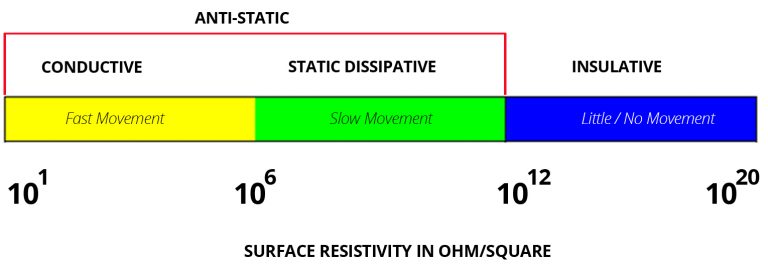ESD Packaging
AiP are particularly strong in the supply of ESD Packaging to the Irish Market.
ESD Packaging Technology
We can source base material in any of the ESD categories as stated below.

Electrostatic Discharge (ESD)
Is the sudden flow of electricity between two electrically charged objects caused by contact, an electrical short, or dielectric breakdown. A build-up of static electricity can be caused by tribocharging or by electrostatic induction.
Conductive
With a low electrical resistance, electrons flow easily across the surface or through the bulk of these materials. Charges go to ground or to another conductive object that the material contacts or comes close to. Conductive materials have a surface resistivity less than 1 x 105 Ω/sq or a volume resistivity less than 1 x 104 Ω-cm.
Anti-Static
Preventing the build-up of static electricity. Reducing static electric charges, as on textiles, waxes, polishes, etc., by retaining enough moisture to provide electrical conduction.
Dissipative
The charges flow to ground more slowly and in a somewhat more controlled manner than with conductive materials. Dissipative materials have a surface resistivity equal to or greater than 1 x 105 Ω/sq but less than 1 x 1012 Ω/sq or a volume resistivity equal to or greater than 1 x 104 Ω-cm but less than 1 x 1011 Ω-cm.2
Insulative
Insulative materials prevent or limit the flow of electrons across their surface or through their volume. Insulative materials have a high electrical resistance and are difficult to ground. Static charges remain in place on these materials for a very long time. Insulative materials are defined as those having a surface resistivity of at least 1 x 1012 Ω/sq or a volume resistivity of at least 1 x 1011 Ω-cm.
Contact AiP to find out more about ESD Packaging
Companies We Work With










